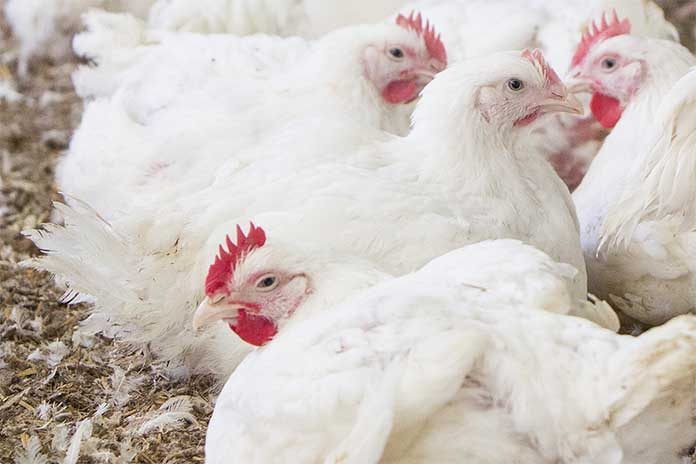
Copper (Cu) is an essential component involved in a wide variety of biochemical processes. It must be supplemented in the trace mineral premix as the amount present in raw materials is inadequate to meet broiler requirements.
At levels higher than nutritional requirements (up to 250 mg/kg), dietary Cu addition enhances growth performance by altering gut microbiota and enhancing nutrient absorption. Such high levels may irritate the gizzard and result in high Cu levels in the poultry litter (Fisher et al., 1973). The hydroxy form of copper, copper hydroxychloride (IBC) is less soluble than CuSO4, thus it is less reactive with other feed components such as vitamins and fats and might be expected to not irritate tissues. Its higher bioavailability allows the producer to achieve similar or improved performance, at reduced levels of trace mineral inclusion (Richards et al., 2010). The current study was designed to compare nutritional and growth promoting levels of IBC with CuSO4 on performance and carcass characteristics in broiler chickens.
A total of 864 Ross 308 male day-old chicks were fed wheat-SBM based starter diets from day 1-14 and the grower diets from day 14-35. Birds had ad libitum access to feed and water throughout the trial period. Eight dietary treatments were replicated six times in floor pens with hardwood shaving litter: negative control (NC) treatment contained no supplemental Cu, 15 mg/kg Cu from CuSO4, 200 mg/kg Cu from CuSO4, 15 mg/kg Cu as IBC, 50 mg/kg Cu as IBC, 100 mg/kg Cu as IBC, 150 mg/kg Cu as IBC and 200 mg/kg Cu as IBC. Body weight gain (BWG), livability (LIV) and feed intake (FI) were measured from d0-35 and used to calculate adjusted feed conversion ratio (FCR). Carcass evaluation and footpad scoring were done on day 35 on 3 randomly selected birds per pen by weighing carcass components and a visual inspection footpad score from 0 to 9.
No difference in starting weight of chicks was recorded (P>0.05). The highest BWG (2580 g) and lowest FCR (1.365 g/g) were observed in birds receiving 200 mg/kg Cu as IBC, followed by 100 mg/kg Cu as IBC (2558 g and 1.375 g/g) compared to NC (2458 g and 1.447 g/g, P<0.01). Birds fed 200 mg/kg IBC gained more weight (77 g, P<0.01) and had lower FCR (3.2 points, P<0.01) compared to those fed 200 mg/kg Cu as CuSO4.
Feed intake (average 3514.3 g/bird) and LIV (average 98.6%) were not significantly affected by Cu levels or sources (P>0.05). Carcass characteristics including breast, thigh, drumstick yield and fat pad were not affected by copper level or source (P>0.05). Foot pad lesions were not affected by Cu source or level (P>0.05).
It can be concluded that supplementation of copper from IBC was more efficacious than sulfate in promoting growth performance of broiler chickens and the inclusion of 200 mg/kg IBC resulted in the highest feed efficiency.
This study was funded by Trouw Nutrition, a Nutreco company.
References
Fisher C, Laursen-Jones AP, Hill KJ & Hardy WS (1973) Bri. Poult. Sci. 14: 55-68.
Richards JD, Zhao J, Harrell RJ, Atwell, CA & Dibner JJ (2010) Asian-Aust. J. Anim. Sci. 23: 1527-1534.
Source: Australian Poultry Science Symposium 2019

















